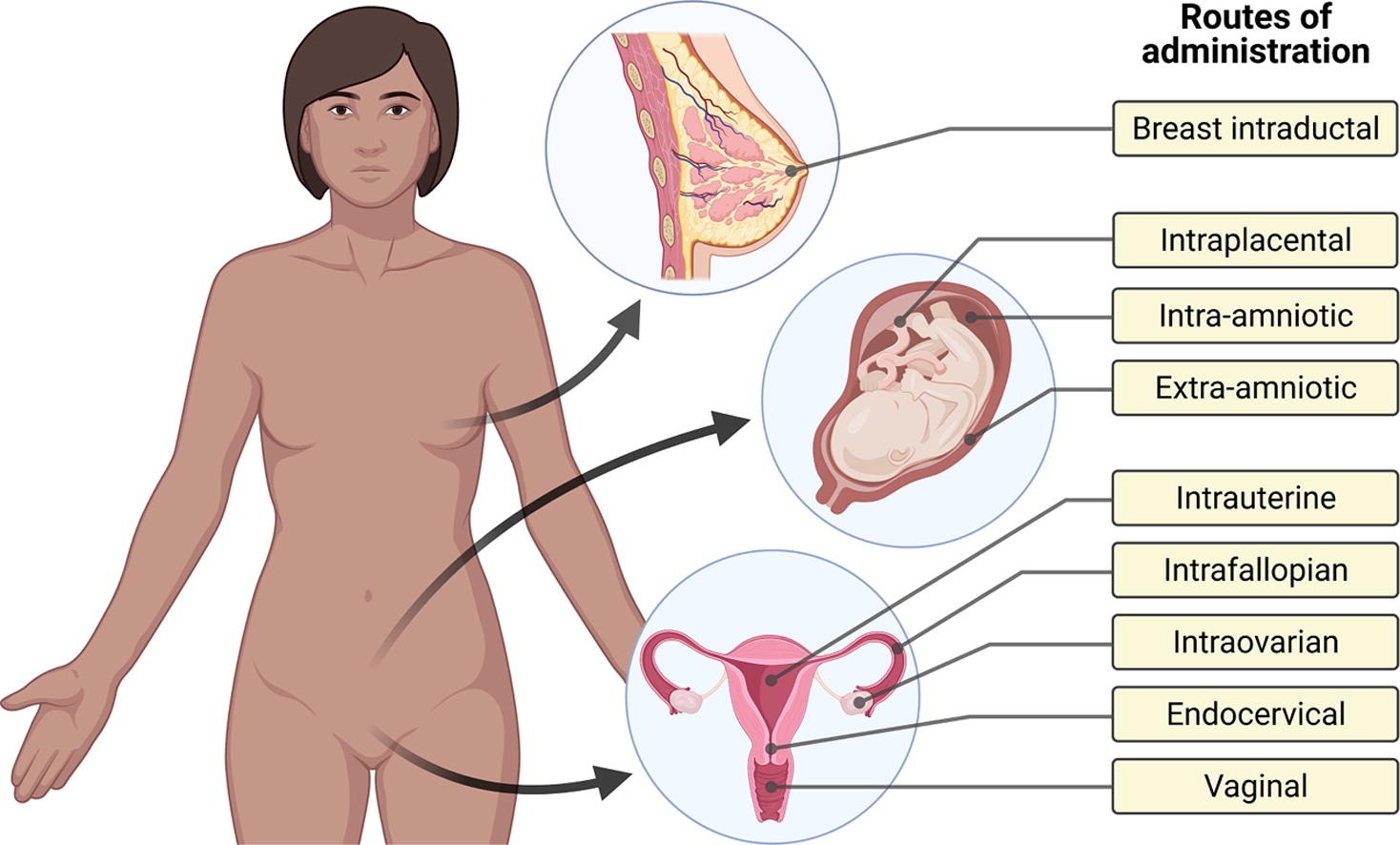Women-specific routes of administration for drugs

The woman’s body presents a number of unique anatomical features that can constitute valuable routes for the administration of drugs, either for local or systemic action. These are associated with genitalia (vaginal, endocervical, intrauterine, intrafallopian and intraovarian routes), changes occurring during pregnancy (extra-amniotic, intra-amniotic and intraplacental routes) and the female breast (breast intraductal route).
While the vaginal administration of drug products is common, other routes have limited clinical application and are fairly unknown even for scientists involved in drug delivery science. Understanding the possibilities and limitations of women-specific routes is of key importance for the development of new preventative, diagnostic and therapeutic strategies that will ultimately contribute to the advancement of women’s health.
This article provides an overview on women-specific routes for the administration of drugs, focusing on aspects such as biological features pertaining to drug delivery, relevance in current clinical practice, available drug dosage forms/delivery systems and administration techniques, as well as recent trends in the field. Continue reading here
Article information: José das Neves, Fernando Notario-Pérez, Bruno Sarmento, Women-specific routes of administration for drugs: a critical overview, Advanced Drug Delivery Reviews, 2021,113865, ISSN 0169-409X, https://doi.org/10.1016/j.addr.2021.113865

